1. Uvod
Brass vs bronze, dvije istaknute legure na bazi bakra, služili su civilizaciji tisućljećima.
While their warm metallic sheen and similar nomenclature often confuse, these alloys possess distinct chemical compositions, svojstva, i aplikacije.
From their roles in ancient weaponry and coinage to modern uses in electrical systems and marine environments,
the decision between brass and bronze hinges on numerous criteria: mehanički izvedba, kemijska otpornost, aesthetic preference, i troškovna učinkovitost.
Understanding their nuances is essential to selecting the right material for the right function.
2. Što je Brass?
Mesing je a copper–zinc alloy known for its excellent workability, attractive golden appearance, and moderate mechanical strength.
Depending on the zinc content and the presence of additional alloying elements, brass can exhibit a wide range of physical, mehanički, and chemical properties.

It is one of the most versatile engineering alloys and is extensively used in electrical components, ukrasni predmeti, vodovodne instalacije, glazbeni instrumenti, and precision machined parts.
The defining characteristic of brass is its tunable composition: by adjusting the copper-to-zinc ratio and introducing minor elements such as dovesti, kositar, aluminij, mangan, silicij, or iron,
engineers can customize the alloy’s performance to suit specific applications.
Kemijski sastav & Alloy Systems
Brasses are typically classified based on their phase structure i zinc content:
- Alpha Brass (α-brass)
-
- Zinc content: Up to ~37%
- Struktura: Single-phase solid solution
- Svojstva: Excellent cold workability, visoka duktilnost, Dobar otpor korozije
- Prijava: Deep drawing, predenje, cold forming
- Alpha-Beta Brass (Duplex Brass)
-
- Zinc content: 37–45%
- Struktura: Two-phase (α + β)
- Svojstva: Stronger and harder, but less ductile; suitable for hot working
- Prijava: Odbrojavanja, tijela ventila, okovi za teške uvjete rada
- Lead Brass (Mesing za slobodno rezanje)
-
- Lead content: ~1–3%
- Svojstva: Superior machinability due to the presence of finely dispersed lead particles
- Prijava: Precision machined components, plumbing hardware, pričvršćivači
- Special Brass Alloys
-
- Alloying elements such as aluminij (Al) for strength and corrosion resistance, silicij (I) for improved wear resistance, i kositar (Sn) for enhanced dezincification resistance
- Prijava: Morski hardver, electrical terminals, ukrasne aplikacije
Common Grades and Standards
| Razred | Standard | Tipična kompozicija | Characteristics and Applications |
| C26000 | ASTM B135 | Pokrajina 70%, Zn 30% | <p; excellent cold workability; used in radiator cores, ammunition casings, i ukrasne obloge |
| C36000 | ASTM B16 | Pokrajina 61.5%, Zn 35.5%, Pb ~3% | Free-cutting brass with outstanding machinability; ideal for automatic screw machines |
| H62 | GB/T 5231 (Kina) | Pokrajina 62%, Zn 38% | General-purpose brass with good hot workability; used in fasteners, valve parts, and rivets |
| H59 | GB/T 5231 (Kina) | Pokrajina 59%, Zn 41% | Stronger but less ductile; used in mechanical structural components |
| CZ108 | BS EN 12163 | Similar to C27200 | Alpha brass; good cold forming and welding properties; used in architectural hardware and general engineering |
3. Što je bronca?
Bronza is a broad family of copper-based alloys primarily alloyed with tin,
though other elements such as aluminum, silicij, fosfor, and manganese are also common alloying agents in modern bronze systems.
While historically the term “bronze” referred strictly to copper-tin alloys, it now encompasses a wide range of alloys with diverse properties tailored to specific industrial needs.
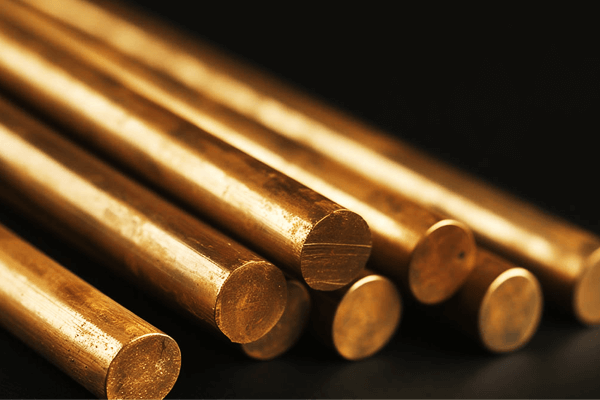
Bronze is known for its visoka snaga, superior corrosion resistance, excellent wear performance, and ability to form a stable protective patina, posebno u teškim okruženjima.
It has been used for thousands of years—dating back to the Bronze Age—and continues to be widely utilized in morski, strukturalan, električni, artistic, and bearing applications.
The key distinction between brass and bronze lies in their alloying elements: brass is primarily bakar + cinkov, while bronze is generally bakar + kositar (or other elements like Al, I, P, MN).
Bronze typically exhibits higher strength, tvrdoća, and resistance to corrosion and metal fatigue, albeit at higher cost and lower machinability compared to brass.
Kemijski sastav & Alloy Systems
Bronze alloys are classified by their primary alloying element beyond copper:
- Fosforna bronca (Cu–Sn–P)
-
- Tin content: ~0.5–11%, with trace phosphorus
- Karakteristike: High fatigue resistance, nisko trenje, excellent spring properties
- Prijava: Ležajevi, opruge, električni priključci, zupčanici
- Aluminijska bronca (Cu–Al)
-
- Aluminum content: ~5–12%
- Karakteristike: Exceptional corrosion resistance (especially in saltwater), visoka snaga
- Prijava: Morski hardver, ventili, pumpe, aerospace bushings
- Silicon Bronze (Cu–Si)
-
- Silicon content: ~2–6%
- Karakteristike: Good castability, otpor korozije, and moderate strength
- Prijava: Arhitektonski hardver, skulpture, pričvršćivači
- Manganska bronca (Cu–Zn–Mn–Fe)
-
- Technically a brass variant, but often grouped with bronzes due to similar strength characteristics
- Karakteristike: Visoka vlačna čvrstoća, Dobra otpornost na habanje
- Prijava: Heavy-duty bearings, propelerske osovine, stabljike ventila
Common Grades and Standards
| Razred | Standard | Tipična kompozicija | Characteristics and Applications |
| C51000 | ASTM B139 | Pokrajina 95%, Sn 5%, P trace | Phosphor bronze; high fatigue resistance and spring properties; used in bushings, zupčanici, električni kontakti |
| C54400 | ASTM B139 | Pokrajina 95%, Sn 4%, Pb 1% | Leaded phosphor bronze; improved machinability for precision components |
| C63000 | ASTM B150 | Pokrajina 83%, Al 10%, U 5%, FE 2% | Nickel aluminum bronze; superior corrosion resistance and strength; ideal for marine propellers, pumpe |
| C64200 | ASTM B150 | Pokrajina 93.5%, Al 6%, I 0.5% | Silicon aluminum bronze; good strength and corrosion resistance; used in valve stems and fasteners |
| C86300 | ASTM B271 | Pokrajina 70%, MN 2.5%, FE 3%, Zn 24% | Manganese bronze; high-strength bearing alloy; used for load-bearing mechanical parts |
4. Mechanical Performance of Brass vs Bronze
When selecting between bronze vs brass for engineering applications, mechanical performance is a critical criterion.
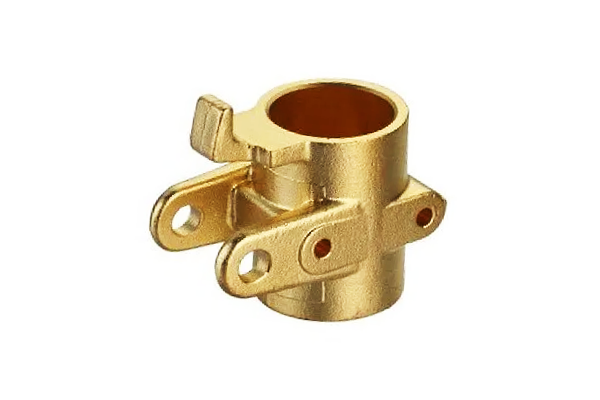
While both are copper-based alloys, their mechanical properties vary significantly based on composition, obrada, and phase structure.
Mechanical Strength and Ductility Comparison
| Alloy Type | Zatečna čvrstoća (MPA) | Snaga popuštanja (MPA) | Produženje (%) | Žilavost (Qualitative) |
| C26000 (Patrona od mjedi) | 300–500 | 100–250 | 30–50 | Umjeren |
| C36000 (Mesing za slobodno rezanje) | 400–550 | 250–400 | 20–35 | Moderate to Low (due to lead content) |
| C51000 (Fosforna bronca) | 350–550 | 200–400 | 15–30 | Visok (excellent under cyclic load) |
| C54400 (Leaded Phosphor Bronze) | 400–600 | 250–450 | 12–25 | Visok |
| C63000 (Aluminijska bronca) | 550–800 | 300–600 | 10–20 | Vrlo visok (impact and fatigue resistant) |
| C86300 (Manganska bronca) | 600–850 | 400–600 | 10–20 | Visok |
Tvrdoća (Brinell, Vickers, Rockwell)
| Alloy Type | Brinell (HB) | Vickers (Hv) | Rockwell (B/H) |
| C26000 Brass | ~65–110 | ~80–120 | ~RB 60–80 |
| C36000 Free-Cutting | ~110–150 | ~120–160 | ~RB 80–95 |
| C51000 Phos Bronze | ~80–130 | ~100–160 | ~RB 70–85 |
| C63000 Al Bronze | ~150–200 | ~180–230 | ~RC 25–35 |
| C86300 Mn Bronze | ~170–230 | ~200–270 | ~RC 25–35 |
Fatigue Life in Cyclic Loading
| Alloy Type | Endurance Limit (MPA) | Bilješke |
| Alpha Brass (C26000) | ~ 100–150 | Sensitive to surface defects and stress risers |
| Al Bronze (C63000) | ~250–350 | Superior fatigue resistance |
| Fosforna bronca | ~150–250 | Excellent for cyclic spring applications |
5. Mjed protiv bronce: Fizički & Thermal Properties Comparison Table
| Imovina | Mesing (Tipičan raspon) | Bronza (Tipičan raspon) | Primjedbe |
| Gustoća | 8.3 - 8.7 g/cm³ | 7.5 - 8.9 g/cm³ | Bronze varies more by alloying elements (npr.. kositar, aluminij, mangan) |
| Specific Strength | 45 - 65 kN·m/kg | 55 - 85 kN·m/kg | Bronze generally stronger per unit weight |
| Toplinska vodljivost | 95 - 130 W/m · k | 35 - 70 W/m · k | Brass conducts heat better; ideal for thermal transfer parts |
| Thermal Diffusivity | ~3.5 – 4.0 mm²/s | ~1.8 – 2.8 mm²/s | Brass spreads heat faster; bronze dampens heat changes |
| Koeficijent toplinske ekspanzije (Cte) | ~20 – 21 × 10⁻⁶ /K | ~16 – 18 × 10⁻⁶ /K | Bronze offers better dimensional stability in temperature fluctuations |
| Specifični toplinski kapacitet | ~0.38 J/g·K | ~0.35 J/g·K | Brass slightly better for heat storage |
| Thermal Shock Resistance | Umjeren | Visok | Bronze resists cracking under rapid temperature change |
| Dimenzijska stabilnost | Moderate to Low | Visok | Bronze preferred in precision thermal cycling environments |
6. Acoustic & Aesthetic Qualities of Brass vs Bronze
Resonance and damping in musical instruments (bells, cymbals, strings)
- Brass Instruments: Brass is the primary material for musical instruments like trumpets, tromboni, and horns.
Its relatively high acoustic impedance and good resonance properties allow it to produce bright, powerful sounds.
The alloy’s ability to vibrate freely at specific frequencies gives brass instruments their characteristic rich tones. - Bronze in Percussion Instruments: Bronze is widely used in percussion instruments such as bells, cymbals, and gongs.
Tin-bronzes, posebno, are known for their excellent acoustic properties.
They have a unique combination of resonance and damping, which results in a warm, rich sound with a long sustain.
Na primjer, church bells made of bronze produce deep, sonorous tones that can carry over long distances.
Color spectrum: yellow brass vs reddish bronze vs gilt finishes
- Color of Brass: The color of brass varies depending on its zinc content. Low-zinc brasses have a reddish-yellow hue, while higher-zinc brasses are more golden-yellow.
This bright, attractive color makes brass a popular choice for decorative applications, such as hardware, nakit, and architectural accents. - Color of Bronze: Bronze typically has a reddish-brown color, which can vary slightly depending on the alloy composition.
S vremenom, bronze can develop a patina, which can range from greenish-blue (in outdoor environments) to darker browns, adding to its aesthetic appeal, especially in art and architectural sculptures. - Gilt Finishes: Both brass and bronze can be given gilt finishes to enhance their appearance.
Gilt finishes can range from bright gold-like coatings to more antique-looking patinas, allowing for a wide range of aesthetic options in decorative products.
Decorative techniques: jetkanje, patination, pozlaćivanje
- Etching: Both brass and bronze can be etched to create intricate designs. Etching involves using chemicals to selectively remove material from the surface, revealing the desired pattern.
This technique is commonly used in the production of decorative plaques, kovanice, and art objects. - Patination: Kao što je spomenuto ranije, bronze naturally develops a patina over time. Međutim, patination can also be artificially induced to achieve specific aesthetic effects.
In brass, patination techniques can be used to create aged or antique-looking finishes. - Pozlaćivanje: Plating is another popular decorative technique. Brass can be plated with gold, srebro, or nickel to enhance its appearance and protect it from corrosion.
Bronze can also be plated, although it is less common due to its natural aesthetic appeal and the potential for the plating to interfere with the development of its characteristic patina.
7. Električni & Magnetic Properties of Bronze vs Brass
Brass vs bronze exhibit distinct electrical and magnetic behaviors that influence their suitability in electrical, electronic, and electromagnetic interference (EMI) prijava.
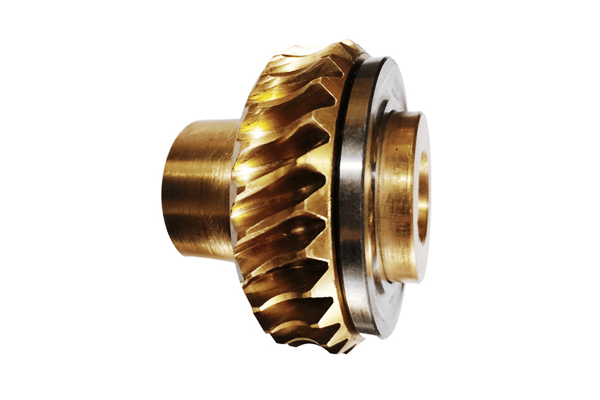
Električna vodljivost
| Materijal | Električna vodljivost (% IACS)* | Tipične primjene |
| Mesing (C26000) | 15 - 28% | Electrical connectors, terminali, sklopke |
| Fosforna bronca (C51000) | 5 - 8% | Izvori, konektori, low-current contacts |
| Aluminijska bronca (C63000) | 7 - 10% | Corrosion-resistant connectors, specialty contacts |
IACS = International Annealed Copper Standard (100% = conductivity of pure copper)
- Brass alloys generally offer moderate electrical conductivity, sufficient for many electrical components where conductivity and mechanical strength are balanced.
- Brončane legure have lower electrical conductivity, largely due to their alloying elements (kositar, fosfor, aluminij),
making them less suitable where high electrical conduction is required but valuable where mechanical strength and corrosion resistance are prioritized.
Magnetska svojstva
| Materijal | Magnetic Permeability (µr) | Magnetic Behavior |
| Mesing | ~1.0 (ne-magnetski) | Essentially non-magnetic |
| Fosforna bronca | ~1.0 (ne-magnetski) | Ne-magnetski |
| Manganska bronca | Lagano magnetski | Can exhibit weak magnetism |
- Oba brass and most bronze alloys are non-magnetic, which is advantageous in applications requiring minimal magnetic interference.
- Some specialized bronzes like manganese bronze may exhibit slight magnetic properties but remain largely non-ferromagnetic.
EMI/RFI Shielding Considerations
- Due to moderate conductivity and non-magnetic nature, mesing is often used in EMI/RFI shielding components such as connectors and enclosures, balancing conductivity with mechanical robustness.
- Bronze’s lower conductivity reduces its effectiveness in shielding compared to brass,
but its superior corrosion resistance makes it suitable for harsh environments where EMI shielding is secondary. - Plating with highly conductive metals (Npr., silver or copper) on either brass or bronze can improve surface conductivity for better EMI/RFI performance.
8. Otpor korozije & Surface Behavior
- Dezincification: Brass can suffer from zinc leaching in corrosive or high-chloride environments, weakening the material.
- Tin Leaching: Bronze resists general corrosion better and does not experience dezincification, though tin can leach in very acidic media.
- Pucanje od korozije pod naponom: Brass is more susceptible, particularly in ammonia-rich environments.
- Marine Performance: Aluminum and silicon bronzes are exceptionally corrosion-resistant, widely used in marine and offshore structures.
- Patina: Bronze forms a stable, protective patina, while brass tarnishes and may require polishing or sealing.
9. Izrada & Forming of Brass vs Bronze
Casting Behavior: Fluidnost, Skupljanje, and Porosity
Lijevanje remains a primary manufacturing route for many brass and bronze components. Understanding their casting traits helps optimize design and minimize defects.

- Brass exhibits superior fluidity, with values reaching approximately 40–45 cm on the fluidity test scale, enabling intricate geometries such as detailed architectural fittings and precision valves.
Its shrinkage rate typically falls between 1.5% i 2.0%, which helps maintain dimensional accuracy. - Za razliku od, bronze alloys show moderate fluidity, ranging roughly from 30–38 cm, which challenges the casting of very thin-walled or complex shapes.
The shrinkage can rise to 2.0% do 2.5%, necessitating allowance in mold design to prevent casting defects.
Porosity is more prevalent in bronze castings, especially without optimized cooling regimes, impacting mechanical integrity.
Cold Working: Ductility and Forming Limits
Cold working shapes metals below their recrystallization temperature, enhancing strength through strain hardening but demanding sufficient ductility.
- Brass shines in cold workability due to its zinc content and microstructure, often achieving elongation values between 30–50% in tensile tests after annealing.
This allows extensive operations such as deep drawing, bending with small radii (down to 3–5 mm in sheets), and fine wire drawing. - Bronze’s ductility varies by alloying elements; na primjer, phosphor bronze exhibits elongation between 15–35%, while aluminum bronze drops to 10–20%.
Cold forming these alloys requires larger bend radii (tipično >10 mm) and intermediate annealing to avoid cracking.
Vrući rad & Žalost: Temperature and Response
Hot working refines microstructure and allows deformation beyond cold forming limits.
- Brass anneals efficiently between 450°C and 600°C, with recrystallization completed within minutes.
Hot rolling or forging produces uniform grain size, improving toughness and ductility. - Bronze requires higher temperatures — often 600°C do 900 °C — and longer annealing times, sometimes several hours, to recover ductility.
Aluminum bronze, na primjer, demands careful control to avoid grain coarsening that can degrade mechanical properties.
Machinability and Tooling: Efficiency and Challenges
Machinability affects cycle times, tooling costs, and surface finish quality.
- Brass’s machinability rating ranges from 70% do 100% relative to free-machining brass standards.
It produces continuous, easily managed chips and requires moderate cutting forces.
Carbide tools effectively handle brass, allowing high-speed machining with minimal tool wear. - Bronze alloys’ machinability is more variable and generally lower, with ratings between 40% i 70%.
Aluminum bronzes and manganese bronzes are notably abrasive, increasing tool wear rates.
Machining bronze often necessitates cobalt-based or ceramic tooling and reduced cutting speeds to maintain tool life.
10. Pridruživanje & Assembly of Brass vs Bronze
Joining brass and bronze components is a critical part of their application in plumbing, električni sustavi, structural assemblies, and artistic works.
Soldering of Brass vs Brazing of Bronze
Brass Soldering:
Brass is highly suitable for both soft and hard soldering due to its favorable thermal conductivity and compatibility with common filler materials.
- Soft soldering (< 450° C) is ideal for light-duty applications such as jewelry, small electronic terminals, and decorative components.
- Lead-based solders (Npr., Sn-Pb 60/40) provide good wetting and moderate strength; međutim,
lead-free solders (Npr., Sn-Ag or Sn-Cu) are now widely adopted for RoHS-compliant products. - Hard soldering (silver soldering) uses high-melting solders (450–800°C),
such as Ag-Cu-Zn alloys, to create strong joints in brass musical instruments, heavy-duty plumbing fixtures, and mechanical linkages.
Bronze Brazing:
Brazing is the preferred joining method for bronze due to its higher melting point and strength requirements.
- Typical brazing temperatures range from 750°C to 950°C, depending on alloy composition.
- Tin-bronze and phosphor bronze are often brazed using Cu-P or Cu-Sn filler metals, chosen to closely match base metal properties and reduce galvanic effects.
- Aluminum and manganese bronzes require specialty fillers with matching aluminum content to avoid phase mismatch and intermetallic formation.
- Fluxes or inert atmospheres are often necessary to prevent oxidation during high-temperature joining.
Mechanical Joining (Threads, Press Fits)
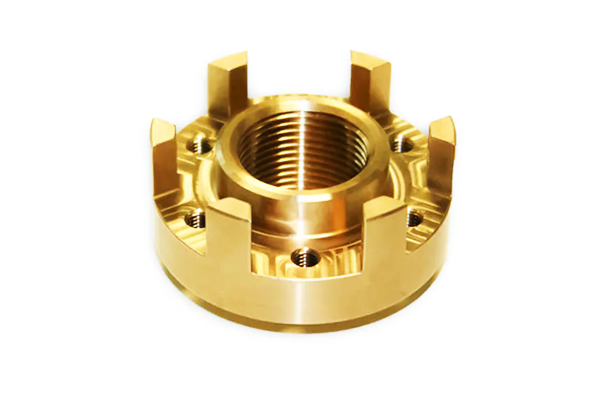
Brass Mechanical Joining:
- Brass’s excellent machinability makes it ideal for threaded connections, especially in fluid handling systems such as pipe couplings, ventili, and sensor housings.
- Press fits are commonly employed in low-to-moderate load applications.
Brass’s ductility allows for slight elastic deformation during insertion, ensuring a snug and vibration-resistant joint.
Bronze Mechanical Joining:
- Zbog svoje higher hardness and strength, bronze components used in heavy-duty applications (Npr., ležajevi, marine valves) often rely on robust thread forms and tighter press-fit tolerances.
- Harder bronze alloys like manganese bronze ili beryllium bronze require precise machining and sometimes pre-heating of housings to enable easier interference fits without inducing cracks.
Usporedba:
- Thread Cutting Speed: Brass – high (300–400 SFM); Bronze – moderate (150–250 SFM)
- Press Fit Tolerance Range (for ⌀25 mm shaft): Brass ~25–50 µm; Bronze ~15–35 µm
Adhesive Bonding Compatibility
Brass Adhesive Bonding:
- Brass bonds well with epoxies, cyanoacrylates, i anaerobic adhesives, especially in low-stress assemblies.
- For best results:
-
- Clean with isopropyl alcohol or acetone
- Lightly abrade the surface to increase contact area
- Apply adhesive and clamp for 5–30 minutes depending on formulation
Applications include decorative mounts, dial gauges, and ornamental structures.
Bronze Adhesive Bonding:
- Bronze requires more stringent surface prep due to rapid oxide formation.
-
- Recommended: kemijsko jetkanje (Npr., fosforna kiselina) or grit blasting followed by immediate bonding.
- High-strength epoxy adhesives with elongation >5% preferirani su, especially for structural or vibration-prone joints.
Prikladno za tool inserts, structural repair, and art installations, especially where welding is not feasible.
11. Key Industrial Applications of Brass vs Bronze
Brass and bronze have earned their place in modern industry through centuries of reliable performance.
Their distinct combinations of mechanical strength, otpor korozije, and workability make them indispensable in a wide range of sectors.
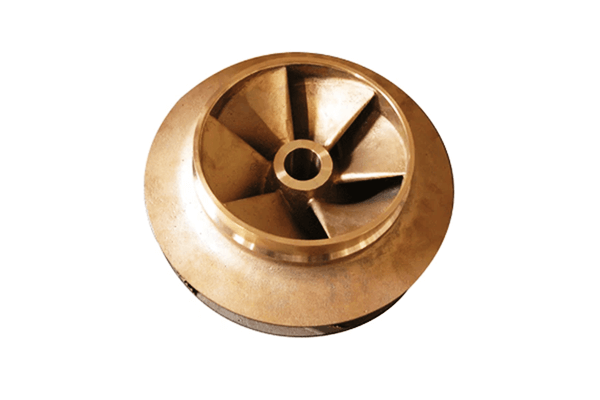
Industrial Applications of Brass
Plumbing and Fluid Handling Systems
Brass’s excellent machinability, corrosion resistance in potable water, and sealing ability make it the metal of choice for components like:
- Priključci za cijevi
- Ventili
- Faucets
- Compression sleeves
- Sprinkler nozzles
Electrical and Electronics Industry
Brass’s good electrical conductivity and non-magnetic properties are ideal for electrical hardware, takav:
- Terminal blocks and sockets
- Connectors and switch contacts
- Cable lugs and grounding clamps
- Printed circuit board (PCB) standoffs
Precision Instruments and Clocks
Its dimensional stability and low friction characteristics support its use in:
- Gears and clock wheels
- Calibration knobs
- Dials and bezels
Decorative Architecture and Hardware
Brass’s golden aesthetic and resistance to tarnishing allow for long-term use in:
- Ručke i brave
- Handrails and architectural trim
- Musical instruments (trube, horns)
- Light fixtures and ornamental grilles
Automotive and Aerospace Components
Brass is used where electrical performance and corrosion resistance are critical:
- Radiator cores and heater elements
- Brake line fittings
- Fuel sensor housings
Ammunition and Defense Industry
Due to its ductility and resistance to corrosion, brass is widely used in:
- Cartridge cases
- Shell casings
- Fuse components
Industrial Applications of Bronze
Ležajevi i čahure
Bronze alloys—especially tin-bronze and leaded bronze—offer excellent wear resistance and embedability, essential for:
- Plain sleeve bearings
- Thrust washers
- Guide bushings in hydraulic systems
Morski and Offshore Engineering
Bronze’s superior resistance to saltwater corrosion makes it indispensable in:
- Propellers and impellers
- Valve seats and pump housings
- Seawater piping components
- Submersible motor casings
Heavy Equipment and Industrial Machinery
For high-load, low-speed applications, bronze components help reduce friction and wear:
- Gear wheels and worm gears
- Sliding wear plates
- Bearing cages and seals
Aerospace and Defense Systems
Specialty bronzes like aluminum bronze and beryllium bronze are used in critical applications where strength and fatigue resistance are key:
- Structural fasteners
- High-stress landing gear bushings
- Electrical connectors with spring properties
Sculpture and Fine Art
Thanks to its casting properties and patina formation, bronze is a traditional and contemporary material for:
- Monumental sculptures
- Medals and commemorative plaques
- Artistic castings and restorations
Additive Manufacturing and Advanced Fabrication
With the growth of metal 3D printing, certain bronze alloys are being explored for:
- Customized art pieces
- High-wear tooling
- Prototyping of mechanical components with aesthetic value
12. Pros and Cons of Bronze vs Brass
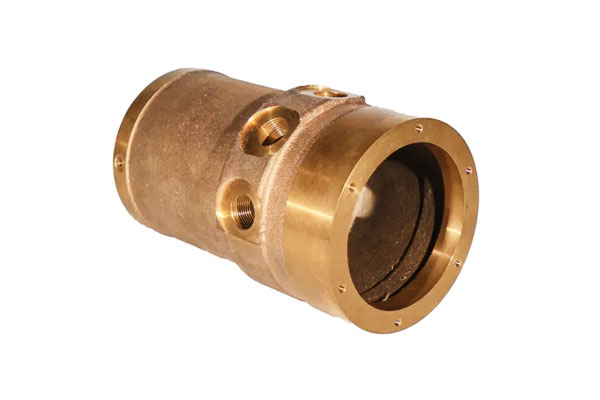
Brass Pros:
- Izvrsna obradivost
- High conductivity
- Affordable
- Good aesthetic variety
Brass Cons:
- Dezincification risk
- Lower strength
- Prone to tarnish
Bronze Pros:
- High strength and wear resistance
- Vrhunska otpornost na koroziju
- Excellent for bearings and marine parts
- Beautiful patina over time
Bronze Cons:
- Harder to machine
- Skuplji
- Lower thermal and electrical conductivity
13. Tablica usporedbe: Mjed protiv bronce
| Kategorija | Mesing | Bronza |
| Sastav baze | Bakar + Cinkov | Bakar + Kositar (or other elements) |
| Common Alloying Elements | Cinkov, Dovesti (free-machining), Nikla (nickel silver) | Kositar, Aluminij, Silicij, Fosfor, Mangan, Beryllium |
| Boja | Bright gold to yellow (higher Zn) | Reddish-brown, sometimes golden; patinas over time |
| Gustoća (g/cm³) | ~8.4–8.7 | ~8.7–8.9 |
| Zatečna čvrstoća (MPA) | 300–550 | 350–800 (Aluminum bronze up to 900 MPA) |
| Snaga popuštanja (MPA) | 100–350 | 200–600 |
| Produženje (%) | 20–50 | 10–35 |
| Tvrdoća (Brinell HB) | 50–150 (varies by alloy) | 60–210 (Aluminum bronze can exceed 200 HB) |
| Toplinska vodljivost (W/m · k) | ~100–130 | ~50–70 (Tin bronze); nisko kao 35 for some aluminum bronzes |
| Električna vodljivost (%IACS) | 28–40% | 7–15% (much lower due to tin or aluminum) |
| Otpor korozije | Dobro; susceptible to dezincification in ammonia/saline | Izvrstan, posebno u morskim sredinama; immune to dezincification |
| Obradivost (Obradivost) | Izvrstan, especially with leaded brass | Umjereno do dobro; varies widely by alloy type |
| Odljenost | Vrlo dobro | Izvrstan, especially for artistic castings |
| Hladna obradivost | Izvrstan; can be drawn, žigosana, spun | Umjeren; more limited for harder bronzes |
| Koštati | Generally lower | Generally higher, especially aluminum and specialty bronzes |
Sound Quality (Musical Use) |
Bright, sharp tones (trube, horns) | Warm, resonant tones (bells, cymbals, gongs) |
| Patina Formation | Tarnishes to dark brown or green over time | Forms aesthetically pleasing green/blue patina over long periods |
| Magnetic Permeability | Ne-magnetski | Ne-magnetski (some aluminum bronzes can be weakly magnetic) |
| Soldering/Brazing | Readily soldered; zinc may volatilize during welding | Typically brazed; specialized filler alloys needed for high-performance |
| Marine Suitability | Limited—only specific alloys (Npr., naval brass) | Excellent—ideal for seawater-exposed parts |
| Key Industrial Applications | Vodovodne armature, glazbeni instrumenti, električni priključci | Ležajevi, čahure, marine propellers, sculpture, aplikacije s visokim opterećenjem |
| Reciklalnost | Vrlo se može reciklirati | Vrlo se može reciklirati |
14. Zaključak
Mjed i bronca, while chemically similar in being copper-based alloys, offer profoundly different properties and applications.
Brass excels u provodljivost, oblikovnost, i trošak, making it ideal for electrical and plumbing uses. Bronze stands out u jačina, otpor korozije, i dugovječnost
Selecting between brass and bronze requires a detailed understanding of performance requirements, environmental conditions, and cost constraints.
By aligning material characteristics with application demands, engineers and designers can ensure longevity, pouzdanost, and aesthetic value in their products.
Česta pitanja
Što je bolje: Bronze or Brass?
It depends on the application.
- Mesing is better for applications requiring Dobra obradivost, električna vodljivost, and a svijetao, decorative appearance, takav vodovodni, glazbeni instrumenti, and electrical connectors.
- Bronza is better suited for visoke čvrstoće, wear-resistant, i otporan na koroziju prijava, posebno u morski, bearing, i teški stroj okruženje.
Ukratko:
- Odabrati mesing for aesthetics and ease of forming.
- Odabrati bronza for strength, izdržljivost, and harsh environments.
Is brass or bronze more expensive?
Bronze is generally more expensive than brass.
- This is due to its higher content of kositar, aluminij, or other specialty elements kao beryllium, which are more costly than zinc (used in brass).
- Dodatno, bronze alloys tend to have more complex processing and are often used in critical or high-performance applications, further increasing cost.
How can you tell if it’s bronze or brass?
Here are key ways to distinguish between brass and bronze:
- Boja:
-
- Mesing: Yellow to gold, depending on zinc content.
- Bronza: Reddish-brown, often darker or with a patina.
- Zvuk (Tonal Quality):
-
- Strike the object gently: Mesing often sounds higher-pitched and “ringy”, dok bronza gives a deeper, more resonant tone.
- Magnetizam:
-
- Both are ne-magnetski, but bronze alloys may contain traces of iron or other elements that exhibit slight magnetic behavior.
- Spark Test (if safe to perform):
-
- Bronze produces shorter, redder sparks, dok brass sparks are brighter and more yellow-white.
Why is bronze no longer widely used?
Bronze is still used, ali:
- It has become less common in consumer products due to higher material costs I rise of more economical alternatives like brass, plastika, i nehrđajući čelik.
- Mesing, being easier to machine and cheaper to produce, ima replaced bronze in many non-critical applications where ultra-high strength or corrosion resistance isn’t necessary.
- U modern engineering, bronze is reserved for specific roles (Npr., marine propellers, čahure) where its unique properties are essential.



